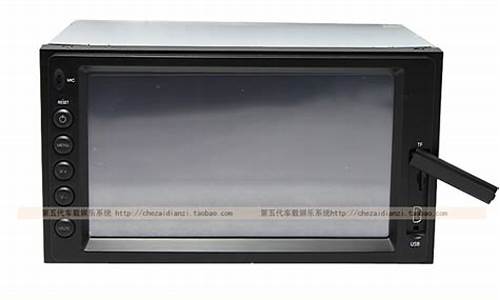seres汽车多少钱_seat汽车报价
1.offer的用法
2.蜜月旅游去那里好呢?

offer sth. to sb.正确 。
offer sth. to sb. = offer sb. sth.
一、 offer作动词的用法: ?
1. offer有"(主动)拿给,给予"的意思,相当于give, 后可接名词或代词作宾语,也可接双宾语,即offer sb sth =offer sth to sb, 如: ?
The young man offered the old man his own seat on the bus. ?
那个年轻人在公共汽车上将自己的座位让给了那个老人。 ?
2. offer作"提出、表示"解。如: ?
Johnson offered a new suggestion. ?
约翰逊提出了一个新建议。 ?
3. offer后接不定式,表示"主动提出做某事"。如: ?
He offered to drive us to the airport, but we preferred to walk there. 他主动提出送我们去机场,但我们宁愿走路去。 ?
4. offer还有"出售"、"出价"的意思。 ?
① offer sth for (money) 以多少钱出售某物 ?
He offered this bike for 600 yuan. 这辆自行车他要价600元。 ?
② offer sb (money) for sth / to buy sth 出价多少购买某物 ?
We offered him 10,000 yuan for his house. 我们愿出一万元钱来购买他的房子。 ?
二、 offer作名词的用法: ?
1. offer表示愿做某事或给予某物(后接of / to do sth) ?
Thank you for your kind offer of helping me. = Thank you for your kind ?
Practise making offers and requests.练习提供帮助和请求。 ?
2. offer有"出价"的意思。如: ?
I've had an offer of $8888 for that house. ?
有人向我出价8888 美元买那房子。 ?
offer的用法
The mission of seat belt is to ensure that?during the events which could createinjuries?the occupants of the vehicle are kept in the correct position oiding any impactagainst the interior parts.
Wearing seat belts properly?is fundamental to your safety and the safety of yourpassenger. During a crash or emergency stop?seat belts can help keep you from beingthrown against the inside of the car, against your passenger, or out of the car.
Of course, seat belts cannot completely protect you in every crash. But, in mostcases?they reduce your chance of serious injury. They can even se your life. That iswhy regulatory require you to wear seat belts.
Seat belts are strong nylon straps that hold people in their seats during a collision.Lap belts extend across a person's lap. Shoulder belts extend over a person's shoulder andchest.
These components are essentially standardized, because the same component is usedon different cars and by different car-manufacturers. Small differences can be onlygenerated by specific conditions for belts installation. The main traditional components areshown in Fig. 10. 1.
Weg
The weg is the component of the safety seat belts that has the mission ofphysically restraining the occupants on the seat. It consists of a fabric with structure,warp and weft, woven with techniques and materials in such a way as to provide highresistance to breakage and severe aging cycles.
The weg is also responsible for the so-called comfort of use, which is determinedby the perception of the user when the seat belt is worn. A weg which is soft andsmooth with low transverse stiffness is usually perceived better in terms of comfort than aweg with hard edges.
Pillar loop
In practice the pillar loop is the effective upper anchor point which can either be fixed,if anchored directly to the central pillar, or mobile in terms of height with the seat beltsheight adjuster. The most common implementation uses a metal ring covered with an in-moulded plastic material.
Although this component ears to be quite simple?it is critical in terms of thestresses that must be endured and damage to the weg that could result. For thisreason, the pillar loop is designed to resist impulsive loads?and prevent the wegrunning through it very quickly during the impact or becoming twisted over its widthwhich may cause significant abrasion and result in breakage of the weg.
Buckle assembly
The buckle is the component of the seat belt to which the tongue is engaged, madewith plastic material in-moulded on a metal insert similar to the pillar loop.
The buckle assembly is composed of a coupler contained in a plastic casing equippedwith a release button which must ensure release operation, particularly following anaccidents and provide a link to the real anchor point. Today, as already mentioned, thereal anchor point is placed on the seat, whereas in the past it was located on the floor; thelink can be made with a metal cable or flat metal.
Height adjuster
This device is installed on the central pillar?B pillar)?according to the proceduredescribed previously for the definition of effective anchor points, S1 and S2?and isdesigned to enable the ropriate positioning of the weg on the shoulder of occupant?according to different population percentiles (i. e. people of various heights). It comprisesa slide-shaped device with a mobile part sliding in a track, and a fixed part to which thecursor can be fixed in the chosen positions. The pillar loop is fixed on the cursor.
Retractor
The retractor constitutes the heart of the safety belt system?hing the task ofwring the weg on a spool?enabling the unwinding and ensuring that the seat beltdoes not cause the unwanted sensation of excessive shooting or impediment to occupantmovement?which may be caused especially if extraction of the weg is blocked whennot required to do so.
Instead the locking of the weg is standardized by the regulation R 16 and isgoverned by two independent systems: the geometric and dynamic system.
The geometric system causes the locking of the belt when, due to external events(deceleration, shock, etc.?the car moves by a significant number of degrees compared tothe reference horizontal position.
Load limiter
To retain vehicle occupants with safety belts without penalizing the comfort or createsecondary injuries is a relatively complex task; the load limiter represents a valuable aid toreach the goal?thanks to the use of the pretensioners?by now almost standard, which areanalyzed below.
The load limiter, nowadays practically an integral part of the retractor, has the taskof limiting the force transmitted by the belt to the shoulder and the chest during animpact?so as to mitigate any effect on the occupants. Part of the load limiter is the torsionbar?located in the retractor. During impact, it twists around, enabling a limited andcontrolled unwinding of the weg so as to limit the force exerted on the occupant andthereby mitigating damage to the shoulder and chest.
Seat belts are designed for adults and larger children. Small children must be properlyrestrained in child safety seats. A pregnant woman needs to wear a seat belt to protectherself and her unborn child.
?
蜜月旅游去那里好呢?
offer三种用法总结归纳。
1、offer有"(主动)拿给,给予"的意思,相当于give,后可接名词或代词作宾语,也可接双宾语,offer后接不定式,表示"主动提出做某事"。
2、offer还有“提出、表示”的意思。offer有“出售”、“出价”的意思。
3、作名词时意为“提议,出价,意图,录取通知书”。
要看楼主的预算多少啦!马尔代夫和巴厘岛都属于海景休闲度那一类,比较适合放松心情,马尔代夫的海水较好!如果楼主喜好宁静的气氛是值得一试的!条件允许的话推荐去希腊和夏威夷!
希腊有三件宝:阳光、海水和石头,那里一年四季适合旅游。6-8月份天气炎热,由于空气干燥,游客还是可以适应的。夏天的温度大约为26-32℃,冬天为10-15℃。1-3月初,天气有点冷,会有一点风。整体上看,最好的旅游时间是4-6以及9-11月份。8月份是旅游者最多的时候。 当然,你也可以在冬天到希腊去。这样,你就可以享受一份清静和悠闲了。希腊的夜生活也很丰富,数以百计的酒吧,餐馆和俱乐部把雅典的夜生活妆点的活泼又美丽。酒吧一般开到凌晨04:00 和夜总会直到凌晨04:00-06:00 (冬天是在雅典享受夜生活的最佳时间)。还可以选择开车一个小时左右到达雅典城北的Loutraki 场(Loutraki Casino ) (tel: (07) 4465 5501) ,这是欧洲最大的场之一,每天24小时开放(除了星期三)。此外,晚上也可以至露天**院看场希腊**,也可坐缆车上利卡维托斯山(Mount Likitos)吃顿丰盛的晚餐、顺便欣赏雅典的夜景,更可以到阿迪库斯剧场(Odeon of herodes atticus)或是耶皮戴奥斯剧场(the ancient theatre of Epidaurus)看场露天歌剧。(大多从晚上9点开始)。
至于夏威夷,不用我多说了吧~!
补充下,其实只要你们幸福,去哪里都行~!
声明:本站所有文章资源内容,如无特殊说明或标注,均为采集网络资源。如若本站内容侵犯了原著者的合法权益,可联系本站删除。












